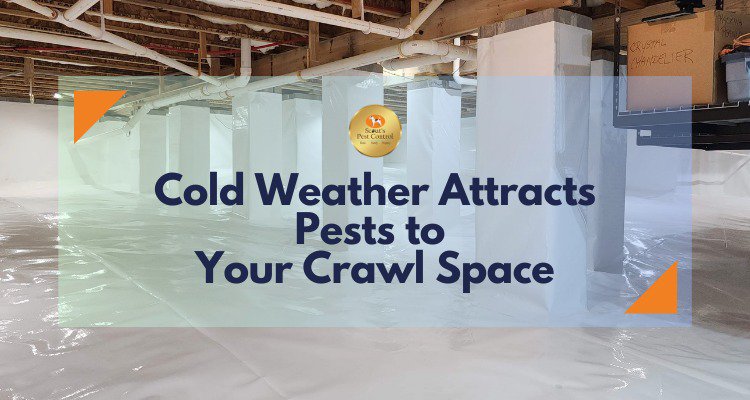Termite swarming, also known as “termite season,” is a natural phenomenon that occurs in many parts of the United States. To watch it is fascinating, but one must keep in mind, these creatures are incredibly detrimental to your home. Termites are social insects that live in colonies and feed on wood and other cellulose materials. During the termite season, reproductive termites leave their colonies in search of new sites to establish new colonies. While termite swarming is a natural process, it can cause significant damage to homes and other structures if left unchecked.
When Do Termites Swarm

Termite swarming typically occurs in the spring and summer months when the weather is warm and humid. In the United States, termite swarms have been observed in many states within the US, including South Carolina. The weather and the conditions are perfect for termites in South Carolina, which is why you should be on guard during termite swarming season. There are many different types of termites. The most common type of termites that live in the United States are called subterranean termites. They live in the ground and build mud tubes to get to the wood above the ground. You will often find signs of these termites in your crawl space or in areas of your home where the conditions are conducive to their survival.
Swarmers

During termite swarming, reproductive termites, also known as alates or swarmers, emerge from their colonies in large numbers. These termites have wings and are attracted to light, so you will often see them flying around outdoor lights or windows. These alates are looking to mate and reproduce. Once they mate, they shed their wings and search for suitable sites to establish new colonies. These new colonies can be established in nearby trees or in the wood of homes and other structures. If you have a crawl space in your home, you should have this space inspected. Termite swarms can often go unnoticed, and it takes a trained eye to be able to identify the signs of termites in your home.

Millions of dollars worth of damage
While termite swarming is a natural process, it can cause significant damage to homes and other structures if left unchecked. Termites feed on wood and other cellulose materials, which can cause structural damage to homes and other buildings. They can destroy the integrity of the home, and multiple colonies can exist within the same area. The damage caused by termites is often not noticeable at first, as they tend to eat the wood from the inside out. Over time, the damage can become severe and compromise the structural integrity of a building. Damage to the internal parts of the building can cause the structure to weaken, and if untreated, this can be rather costly. In fact, in the US, termites cause millions of dollars’ worth of damage to homes each year.
The cost of termite remediation is indeed very high. If you want to ensure that you are not one of the victims of a termite infestation. It is far better to be proactive than reactive when protecting your home from termites. Get your home inspected and protected.

In addition to structural damage, termite infestations can also cause other problems. For example, termite activity can cause moisture problems in homes, which can lead to mold growth and other issues. Termite infestations can also damage your air conditioning within the home. This can also increase costs if the HVAC system is compromised.
Be Proactive Rather Than Reactive
To protect homes and other structures from termite damage, it is important to take steps to prevent termite infestations. Maintaining good moisture control is one of the most important steps. Termites need moisture to survive, so reducing moisture in and around homes can help to deter them. Homeowners can do this by using dehumidifiers in damp areas of the home, fixing any leaks in the roof or plumbing, and ensuring that rain gutters and downspouts are working properly.
Reduce Wood to Soil Connections
Another important step is to reduce the amount of wood-to-soil contact around the home. This can be done by ensuring that wood piles, lumber, and other wood products are stored away from the home and off the ground. Homeowners should also ensure that wooden structures such as decks and fences are installed with barriers to prevent direct contact with the soil.
Regular Inspections
Carrying out regular inspections by scouts’ pest control can also help prevent termite infestations. Scouts can inspect homes for signs of termite activity and provide treatment options if needed, including the installation of moisture barriers and dehumidifiers. Homeowners should also be vigilant in looking for signs of termite activity, such as mud tubes or piles of sawdust near wooden structures. See our article on how to recognize termite infestations here.

Final Thoughts
In conclusion, termite swarming is a natural process that occurs in many parts of the United States. Of course, it’s fascinating to observe. However, termite swarming can also cause significant damage to homes and other structures if left unchecked. Homeowners can take steps to prevent termite infestations by maintaining good moisture control, and reducing wood-to-soil contact, as we previously mentioned. Nevertheless, it is imperative to take adequate precautions to protect your home. Getting regular inspections and ensuring you remove the conditions necessary for termite survival are priorities.
We highly recommend having your crawl space encapsulated, as it negates those conditions, as well as having termites and other wood-damaging pests treated regularly. Remember this is an investment well worth pursuing. to protect your home.





